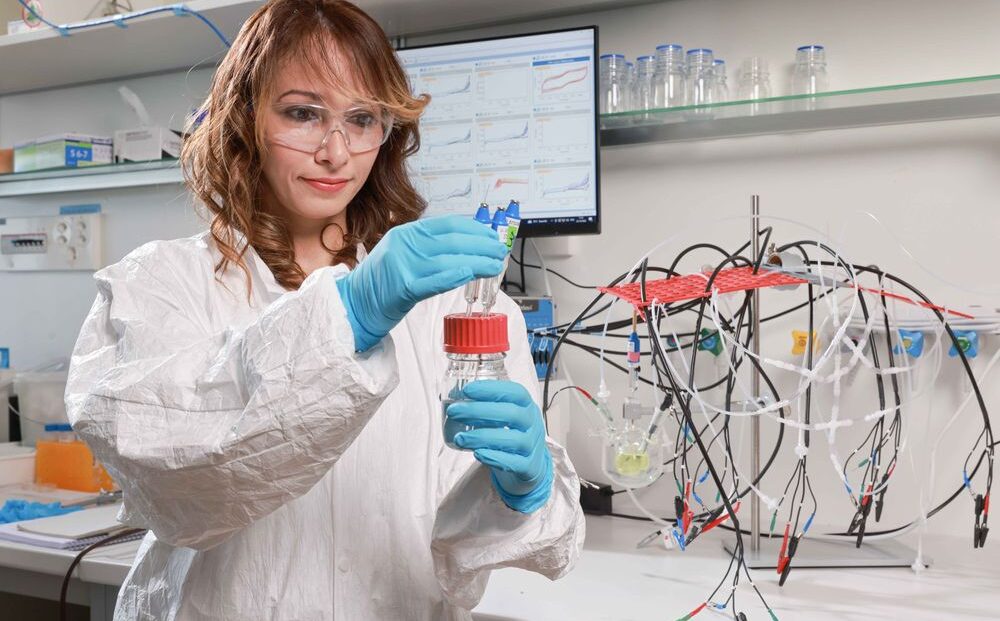Microbes as power stations

A ground-breaking EPFL research project led by Professor Ardemis Boghossian has shown how modified E. coli bacteria can effectively generate electricity. This discovery opens new doors for energy production and could enable far-reaching applications in environmental technology and industry.
In an unprecedented approach, Professor Boghossian’s team has transferred the properties of exotic microbes that live under anaerobic conditions and produce electricity as a by-product of their metabolism to the widespread and well-researched bacterium E. coli. This innovation could open the door to innovative applications in various industries.
From nature to the lab
The natural models of research, anaerobic microbes, utilise unique metabolic pathways to donate electrons to metals and thereby generate electricity. This mechanism was successfully implemented in E. coli, which predestines the bacterium for a wide range of technological applications. The transfer was complex and required the insertion of special proteins from the electrically active microbes in E. coli, which brought the ability to produce electricity into the laboratory.
Possible applications and practical benefits
The modified E. coli could be used in fuel cells, in wastewater treatment or as a biosensor. Of particular interest is the potential application in wastewater treatment, where the bacteria would not only help to purify the water, but could also generate electricity as a by-product. These dual benefits represent an attractive option for a circular economy where waste products are put to valuable use.
Innovative research and industry collaboration
Supported by EPFL’s innovative environment and the opportunity to work across disciplines, Professor Boghossian’s team continues to explore the practical applications of “electric” bacteria. The development of a prototype for the food industry in collaboration with a newly founded start-up demonstrates the commercial potential of this technology. This commitment offers not only scientific but also sustainable industrial solutions that can contribute to reducing the carbon footprint.
Outlook and global interest
While the technology is still in the development phase, there is already growing interest from both academia and industry. The work of Professor Boghossian and her team is a shining example of how innovative basic research can have a transformative impact on our energy future.